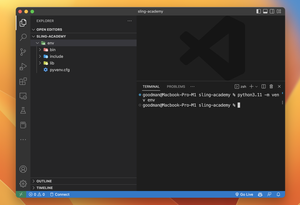The Python Requests module is a popular HTTP library for making web requests. However, while working with the Requests module, you might encounter various exceptions that can cause your program to crash if not handled appropriately. Proper exception handling ensures your program’s robustness and reliability. Here are some solutions to effectively manage exceptions in the Python Requests module.
Solution 1: Basic Try-Except Block
Implement a basic try-except block to catch any exceptions that may occur when sending an HTTP request. This is a straightforward first line of defense that you can use to manage exceptions quietly.
Steps to Implement:
- Encapsulate the API call code within a try block.
- Use the except statement to catch the appropriate exceptions.
- Implement a logging mechanism or an error message to report the exception.
- Optionally, include an else block to execute code if the try block does not raise an exception.
Code Example:
import requests
try:
response = requests.get('https://example.com/api')
response.raise_for_status()
except requests.exceptions.RequestException as e:
print(f'An error occurred: {e}')
Advantages:
- Simple to implement.
- Can catch all subclasses of the RequestException.
Limitations:
- May catch errors too broadly without specificity.
- Lacks granular control over different types of exceptions.
Solution 2: Specific Exception Handling
Handle exceptions more specifically by catching different types of exceptions explicitly. This allows for tailored error messages and custom handling logic for different types of errors, such as connection errors, timeout errors, etc.
Steps to Implement:
- Identify the specific exceptions you want to handle (e.g., HTTPError, ConnectionError).
- Write separate except blocks to handle the different exceptions.
- Provide specific error messages or recovery steps for each exception.
Code Example:
import requests
try:
response = requests.get('https://example.com/api')
response.raise_for_status()
except requests.exceptions.HTTPError as http_err:
print(f'HTTP error occurred: {http_err}')
except requests.exceptions.ConnectionError as conn_err:
print(f'Connection error occurred: {conn_err}')
except requests.exceptions.Timeout as timeout_err:
print(f'Timeout error occurred: {timeout_err}')
except requests.exceptions.RequestException as err:
print(f'An error occurred: {err}')
Advantages:
- Gives more control over exception handling.
- Allows for more descriptive error messages and tailored responses.
Limitations:
- Requires more verbose code to handle each exception type.
- Might miss exceptions that aren’t explicitly caught.
Solution 3: Defining Exception Handler Function
Create a separate function to handle exceptions. This is useful when your program requires the same exception handling logic in multiple places, promoting code reuse and maintenance.
Steps to Implement:
- Define a function that takes the exception as an argument.
- Implement handling logic tailored to different types of exceptions within the function.
- Call this function in the except block of every try-except where you need to handle requests exceptions.
Code Example:
import requests
def handle_exception(e):
if isinstance(e, requests.exceptions.HTTPError):
print('HTTP error!')
elif isinstance(e, requests.exceptions.ConnectionError):
print('Connection error!')
# Add other exception types here as needed
else:
print('Other error occurred.')
try:
response = requests.get('https://example.com/api')
response.raise_for_status()
except requests.exceptions.RequestException as e:
handle_exception(e)
Advantages:
- Promotes code reuse and cleaner main application logic.
- Easy to maintain and update handling logic for exceptions.
Limitations:
- Initial setup requires extra effort to define the function.
- Not always necessary for simple scripts with limited exception handling needs.
Implementing the above solutions ensures you are better equipped to manage and debug exceptions that arise while working with the Requests module, leading to more resilient Python applications.











